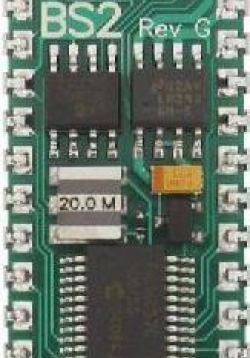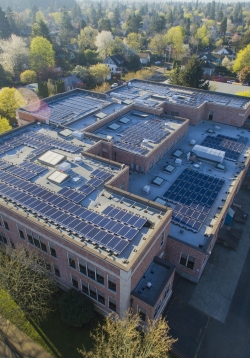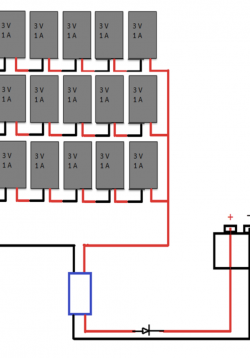Electrical Energy and Solar Module Efficiency
This lesson will let students do research to define terms that will be used in this unit. They will record this information in their Journals, which can be scientific or simple homemade notebooks. This lesson will also introduce the multimeter, small solar...
Designing a Solar Phone Charger
This is the culminating activity for the unit “Off the Grid.” Students will be given some restricted parameters around which to design a solar powered battery operated phone (or other USB device) charger . They will charge the AA battery packs that have...
Measuring Voltage Using a Microcontroller
In this lesson students will be introduced to series circuits, resistors, a photoresistor and a microcontroller. There’s a lot here, but it boils down to making a voltage divider circuit and measuring the voltage at different points. A second circuit...
Controlling a Servo
In this lesson students will learn how to control a servo using the Basic Stamp. Then students will combine the photoresistor from the previous lesson with the servo to create a light controlled servo.
Creating a Light-Tracking Servo
Students will learn how to program the Basic Stamp to use information from two photoresistors to point a servo at a light source. This will be the first degree of freedom for the flower head.
Dual Axis Light Tracking
Students will take the previous lesson and apply them in creating a light tracker with two degrees of freedom. The axis of rotation will be about the horizontal and vertical. Teams will have everything they need to make this build work. They have already...
Integrating Solar Power
At this point students should have a working robotic sunflower that will track the sun with 2 degrees of freedom. This next lesson powers the whole system with a photovoltaic module. A Zener diode is used to charge a 6V motorcycle battery which then...
Solar Pathfinder Tutorial
This lesson is designed to allow the students to practice assembling and using their Solar Pathfinders, along with analyzing the data. The students will take a single measurement and digital photograph at a location near the classroom designated by the...
Solar Site Assessment
Students will do an actual site assessment to determine the available solar resource for a chosen location.
Replacing Fossil Fuels?
As students begin to look at the role photovoltaics might play within the transportation energy sector, it is important for them to understand why the phasing-out of fossil fuels is such a daunting task. This lesson is designed to help students comprehend...




